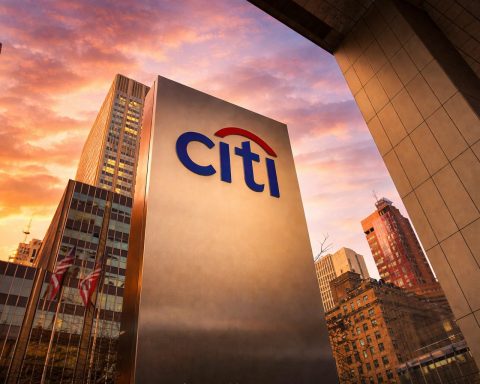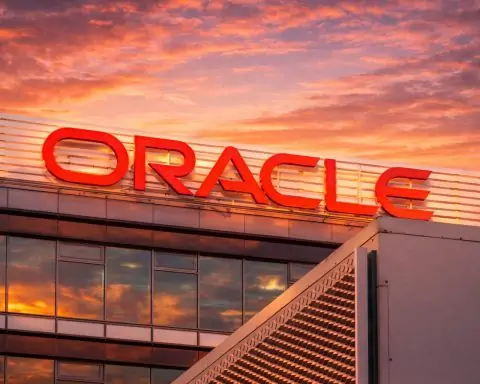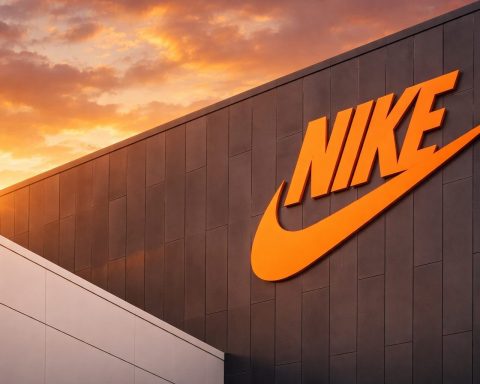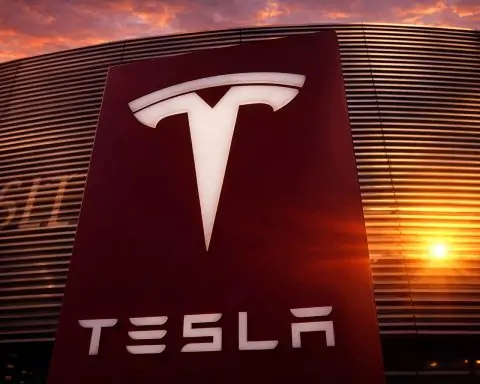- Current Price & YTD Performance: GameStop (NYSE: GME) stock is hovering around $23–$24 per share as of October 27, 2025 [1]. It jumped over 5% late last week, but remains down roughly 25% year-to-date, trading nearer its 52-week low (~$20.7) than its high (~$35.8) [2] [3].
- Recent Rally & Volatility: GME spiked +5.07% on Thursday, Oct. 23, reaching about $23.63 intraday despite no new company news [4]. The surge was fueled by bullish options bets – the put/call ratio plunged to 0.1 (extremely call-heavy) as traders speculated on more upside [5]. That momentum cooled; shares closed Friday at $23.30 and were flat in early Monday trading [6].
- Major Moves in October: In early October, GameStop stunned investors with bold corporate actions. It distributed special warrants to shareholders (1 warrant per 10 shares, exercisable at $32 by Oct. 2026) and enacted an 11-for-10 stock split effective Oct. 3 [7]. The company also filed a “mixed shelf” registration to enable quick sales of new stock or debt if needed [8]. These maneuvers, aimed at bolstering GameStop’s capital, initially sent GME tumbling (the stock fell ~6–16% in early October on dilution fears) [9]. However, they also stoked speculation of a short squeeze, given GameStop’s high short interest (~15–16% of its float, about 72 million shares short) [10] [11].
- Pokémon-Fueled Holiday Strategy: The retailer is betting big on Pokémon trading cards and collectibles to revive sales this holiday season. Leaked schedules show GameStop planning a wave of Pokémon TCG product drops and exclusive bundles from Oct. 24 through January 2026, with prices ranging from $5.99 to $319.99 [12]. This initiative – featuring dozens of new card sets and limited-edition packs – is part of GameStop’s push to become a “collectibles hub” rather than just a video-game seller [13] [14]. Analysts note that high-turnover collectibles like trading cards and figurines have become key for driving foot traffic and holiday sales as traditional game sales slow [15].
- Improving Fundamentals: Unlike the meme frenzy of 2021, GameStop now boasts real earnings and cash flow. It delivered a profitable Q2 FY2025 with $168.6 million in net income on $972.2 million revenue (+21.8% year-over-year) [16]. Collectibles sales surged +63% in the quarter (to $228 million), and hardware sales jumped +31%, boosting overall results [17]. Aggressive cost cuts (SG&A down 19% YoY) and a shift to higher-margin products have improved profitability [18]. GameStop holds a cash war chest estimated around $6–8 billion (over $11 per share) with effectively no long-term debt [19]. Notably, the company has amassed 4,700+ Bitcoins (valued at ≈$500 million) as part of its treasury – a bold crypto bet that adds both upside potential and volatility to its balance sheet [20].
- Analyst Skepticism Persists: Wall Street remains largely bearish on GME. This weekend, Weiss Ratings reaffirmed a “Hold (C–)” grade on GameStop, while Wedbush Securities continues to rate it a “Strong Sell” with a price target near $13.50 [21] [22]. In fact, the average analyst 12-month target is about $13.50 – implying roughly 40% downside from current levels [23] [24]. Analysts caution that despite GameStop’s turnaround, its valuation (around 32× earnings, far above retail industry norms) looks lofty until the company proves its new strategy can deliver sustainable growth [25]. One recent analysis concluded that GameStop is “a stock to trade, not one to invest in” for the long term until consistent performance is evident [26].
- Meme Trader Buzz Returns (Cautiously): Retail investor interest in GME has ticked up again – though it’s a far cry from the Reddit mania of 2021. GameStop was a trending ticker on social platforms in recent weeks [27]. Enthusiasts on subreddits like r/Superstonk have cheered the surprise profits and dissected technical charts, and GME briefly hit #1 in Stocktwits message volume as some traders debated the warrant issuance and a possible “bottom” in the stock [28]. Sentiment on forums is mixed – many longs are encouraged by the company’s progress, while others voice frustration at the volatile price swings [29]. Overall, the hype is more muted than at meme-stock peak, and the community’s outlook is best described as cautiously optimistic.
GME Stock Rebounds After Volatile Month
GameStop’s stock price has seen whipsaw action throughout October, reflecting both speculative fervor and fundamental recalibration. After languishing near its yearly lows earlier in the month, GME staged a late-October rebound: shares leapt over 5% in a single day on Oct. 23 amid a frenzy of call-option buying [30]. Traders piled into short-term bullish bets, driving the put/call ratio down to 0.1, an extremely imbalanced level signaling almost exclusively call option activity [31]. Such aggressive options positioning often forces market makers to buy the underlying stock (to hedge their call sales), which can amplify a rally. Indeed, GameStop’s sudden surge to about $23.63 that Thursday came despite no new company announcements [32] – suggesting the move was driven by market dynamics and renewed retail enthusiasm rather than news.
By the week’s end, however, the momentum fizzled out. GME gave back some gains and ended Friday at $23.30 [33], essentially flat for the week. As of Monday morning (Oct. 27), the stock was holding around the mid-$23 range [34], showing relative steadiness after the prior volatility. Even with the recent jump, GameStop’s price is still closer to its lows of the year (~$20.7) than to the highs (~$35.8) set during an early 2025 rally [35]. By most accounts, GME remains well below its meme-era peak valuations, and year-to-date the stock is down roughly 25%, reflecting the challenging path from speculative hype to sustained recovery [36].
This roller-coaster pattern – sharp pops followed by pullbacks – has characterized GameStop’s trading for much of 2025. Each burst of optimism (often sparked by online buzz or technical trading triggers) has so far been tempered by reality checks about the company’s fundamentals and valuation. Still, the late-October spurt showed that pockets of speculative energy persist in the shareholder base. GME’s average daily trading volumes have climbed above normal in these episodes [37], and the stock’s beta has turned negative in some measures (around -0.85) [38], indicating it often moves out-of-step with the broader market – a sign of its idiosyncratic, sentiment-driven trading pattern.
Capital Moves: Splits, Warrants and Short-Squeeze Speculation
A major storyline for GameStop this month was its ambitious corporate restructuring moves – and the market’s reaction to them. On October 3, GameStop executed an unusual one-two punch of shareholder rewards and financing flexibility: an 11-for-10 stock split (effectively a 10% stock dividend) and a special warrant “dividend.” Every shareholder of record received one warrant for every 10 shares owned, with the warrant giving the right to purchase an additional share at $32 (the warrants expire in October 2026) [39]. These actions immediately increased the share count (via the split) and dangled the possibility of future dilution if the warrants are exercised, which startled some investors. Simultaneously, GameStop filed a “shelf” registration with the SEC to issue up to $5 billion in various securities (equity, debt, or other instruments) at management’s discretion [40]. This shelf registration, effective automatically, essentially puts ammunition at the company’s disposal to raise capital quickly when market conditions are favorable [41].
The market’s initial response to these moves was swift and negative. News that GameStop might sell new shares or debt (via the shelf filing) and that the share count would immediately expand (via the split and warrant distribution) led to dilution fears. Between late September and the first week of October – as these actions were announced and took effect – GME’s stock fell roughly 6–16% from its late-September levels [42]. Essentially, some investors interpreted the maneuvers as signals that GameStop’s management might take advantage of any price strength to issue equity, potentially diluting existing holders. On social media, skeptics argued that the warrant dividend was a “gimmick” to reward loyalists but could ultimately cap the stock’s upside (since any price above $32 might invite a wave of warrant exercises adding to share supply).
However, the complex narrative around these moves also had a silver lining for bullish retail traders. In meme-stock lore, any hint of “corporate action” tends to rekindle talk of a short squeeze – and GameStop’s case was no different. The company’s short interest remains elevated at roughly 15–16% of its float (around 72 million shares short as of the end of September) [43] [44]. Immediately after the split and warrant announcement, online forums lit up with theories: some argued that short sellers would struggle to account for the new warrants and split-adjusted shares, potentially trapping them. Others speculated that if GameStop’s price were to rise significantly (above the $32 warrant strike), the eventual exercise of warrants could actually inject cash into GameStop’s coffers (since the company would receive $32 per warrant exercised) and simultaneously force shorts to cover.
It’s important to note that these scenarios are highly speculative. In practice, the warrants are long-dated (a full year away from expiring) and out-of-the-money at present, and GameStop has made no immediate moves to sell new shares under the shelf registration. Nonetheless, the mere presence of these instruments has introduced a new dimension to GME’s story. The company now has substantial flexibility to raise funds if needed – a fact that could fortify its balance sheet, but which also gives bearish analysts another reason to eye potential dilution. For now, GameStop’s leadership (including Executive Chairman Ryan Cohen) has not indicated any imminent share offering. The warrant dividend, for its part, has been framed by the company as a shareholder perk (somewhat analogous to a loyalty reward). In the near term, these October actions appear to be a strategic bet: strengthen the capital base and reward long-term holders, even at the risk of short-term volatility. How this bet plays out may depend on GameStop’s execution in the coming quarters – and whether it can convince the market that new capital can be deployed to fuel growth rather than merely plug holes.
Betting on Pokémon: GameStop’s Holiday Gambit
GameStop’s management isn’t just counting on financial engineering to boost the stock – they’re also making a tangible retail push centered on one of the hottest categories in hobbyist culture: Pokémon trading cards. In an effort to drive traffic and sales through the critical holiday quarter, GameStop has coordinated a blockbuster schedule of Pokémon Trading Card Game (TCG) product releases and exclusive bundles, spanning from late October 2025 into January 2026 [45]. According to leaks that surfaced on social media (and were later confirmed by industry analysts), the company has dozens of Pokémon-themed items lined up, including limited edition card sets, collector’s boxes, and tie-in merchandise. Price points range widely – from affordable $5.99 booster packs to high-end bundles costing up to $319.99 – indicating GameStop is targeting casual fans and serious collectors alike [46].
This “Pokémon holiday blitz” effectively positions GameStop to capitalize on a continuing collectibles boom. In recent years, Pokémon cards have seen skyrocketing demand, with rare cards fetching eye-watering prices at auction. GameStop, sensing an opportunity, has been shifting more shelf space to trading cards, comics, figurines, and other collectible categories. InvestorsObserver notes that GameStop is intentionally trying to reinvent itself as a broader “collectibles hub,” not just a video game retailer [47]. By timing exclusive Pokémon product drops throughout the holiday season, the company aims to create a steady drumbeat of reasons for fans to visit stores or its website, driving repeat traffic. This strategy also plays on FOMO (fear of missing out): many of the items are expected to have limited quantities, and GameStop often imposes purchase limits to create a sense of controlled scarcity [48] – techniques that have worked well to spur sales of trading cards in the past.
The Pokémon push is part of a larger trend: GameStop doubling down on collectibles and pop culture as traditional video game sales face headwinds. Industry-wide, physical game software sales have been declining due to digital downloads, and console hardware margins are thin. GameStop’s answer has been to lean into categories that offer both higher margins and enthusiast appeal – from trading cards and board games to anime toys and apparel. These items not only carry better profit margins but also draw a different kind of customer into stores. For example, a Pokémon card release can turn GameStop outlets into mini event centers, with lines of collectors – a sight that’s become rarer in the era of digital game distribution.
Early signs suggest the tactic could pay off. Social media buzz around the leaked Pokémon schedule was considerable, with the dedicated fan community (e.g., followers of the “PokeNotify” Instagram account) expressing excitement over upcoming launches [49]. Importantly, securing steady inventory of in-demand cards implies improved relationships with suppliers like The Pokémon Company. Analysts note that the newly revealed schedule “signals renewed supply-chain and vendor confidence” in GameStop [50] – a positive development after the chain suffered inventory issues and even store closures in past years due to mismanaged stock. In short, GameStop’s holiday bet on Pokémon is twofold: boost short-term sales during the holiday rush, and rebuild GameStop’s reputation among both customers and suppliers as a go-to destination for collectible hobbies.
From Meme Frenzy to Money: GameStop’s Financial Turnaround
One of the most dramatic shifts in the GameStop saga from 2021 to 2025 is the company’s fundamental financial health. Back in the meme-stock heyday, GME’s valuation was detached from its struggling earnings. Fast-forward to now, and while the stock is much lower than its peak, the business has markedly improved by traditional measures. GameStop has now logged multiple consecutive profitable quarters, demonstrating that its turnaround plan – albeit slow and still uncertain – is bearing fruit.
In the second quarter of fiscal 2025 (May–July period), GameStop shocked observers by delivering a net profit of $168.6 million, up from just $14.8 million in the same quarter a year prior [51]. Revenues for Q2 came in at $972.2 million, a 21.8% jump year-over-year [52]. This top-line growth is especially notable given that GameStop had shrunk its store base and exited some international markets in recent years – meaning the gains reflect improved sales productivity and new revenue streams. The earnings beat was driven by a combination of cost-cutting and sales mix changes. Selling, general and administrative expenses (SG&A) were down almost $52 million from the prior year’s quarter [53], thanks to layoffs, store closures, and other belt-tightening moves initiated by the Ryan Cohen-led board. On the revenue side, GameStop saw blockbuster growth in its collectibles segment: collectible product sales surged +63% year-over-year in Q2 (to about $228 million) [54]. This was complemented by a +31% rise in hardware sales (driven by strong demand for new gaming consoles and accessories) [55]. Meanwhile, the historically core segment – video game software – has been less impressive, but the weakness in legacy sales was offset by strength in these new focus areas.
The result of these trends is a vastly improved margin profile. GameStop’s Q2 operating income was $66.4 million, a swing from a $22 million operating loss a year ago [56]. Net margins are now around 9.4% [57] – not high for a tech company, but quite high for a brick-and-mortar retailer (and a far cry from the deep losses GameStop was posting pre-2023). Perhaps the most eye-opening change is on the balance sheet: GameStop reported $8.7 billion in cash and marketable securities at quarter-end [58]. Even excluding the value of its sizable Bitcoin holdings (roughly 4,710 BTC, worth about $500 million) [59], that is an enormous cash pile for a company with a $10–11 billion market cap. It means over three-quarters of GameStop’s market value is backed by cash or liquid investments. This was achieved through a series of stock offerings and zero-interest convertible note issuances during 2022–2025, which infused cash while (so far) not diluting equity – the notes don’t convert unless the stock soars above certain prices in coming years [60] [61]. GameStop essentially fortified its balance sheet at the height of its meme frenzy and has preserved that war chest.
The huge cash reserve and lack of debt give GameStop something it never had before: optionality. Management has hinted at using the funds for strategic acquisitions or investments in technology and brand partnerships (though none have materialized publicly yet). It also provides a buffer to experiment with new revenue models (for instance, the company’s foray into NFTs and digital marketplaces in 2022–23, which has since been de-emphasized). In the words of one early GameStop bull, the company is now building a “fortress of cash and optionality” reminiscent of a mini-Berkshire Hathaway [62] [63] – a surprising analogy for a video game retailer, but one that speaks to its newfound financial flexibility.
That said, risks remain on the fundamental front. GameStop’s revenue, while growing in recent quarters, is still below its pre-pandemic levels and heavily dependent on a few categories. The soaring collectibles sales now represent about 25% of total revenue [64], which is double their contribution a couple of years ago – but it’s uncertain if this growth can be maintained each quarter. Hardware sales (consoles/accessories) can be cyclical and tied to product launch cycles; the current upswing may moderate once the latest console generation saturates the market. And while GameStop’s cost cuts have improved profitability, there’s likely limited room for further SG&A reductions without compromising operations (the company still has over 3,200 stores worldwide as of early 2025 [65], and has signaled it will eventually trim this footprint). In short, GameStop has bought itself time and breathing room – converting meme-fueled capital into a healthier balance sheet – but the next challenge is translating that into sustainable, long-term growth in a tough retail environment.
Wall Street vs. WSB: Analysts Remain Cool as Retail Investors Rally
Despite GameStop’s operational improvements, most Wall Street analysts remain unconvinced that GME is a buy at current levels. Traditional equity research coverage of GameStop has been sparse ever since the 2021 saga (many firms dropped coverage as the stock became too volatile and detached from fundamentals). The few that maintain coverage are generally bearish. This past weekend, Weiss Ratings – an independent research firm – reaffirmed its “Hold (C–)” rating on GameStop [66], indicating a lukewarm view even after the Q2 profit. Meanwhile, Wedbush Securities, one of the only major brokers that consistently covers GME, has kept its underperform stance. Wedbush’s analyst reiterated a $13.50 price target (post-split) for the stock [67]. That target is roughly 40% below the current price – essentially predicting that GameStop’s shares will sink back into the teens over the next year.
The consensus among analysts (though only a couple are actively publishing estimates) is that GameStop is overvalued relative to its outlook. The average 12-month price target is about $13.50 [68], and the consensus rating is “Reduce” or effectively a Sell [69] [70]. A key point underpinning this skepticism is valuation: even after its pullback, GME trades at around 30–32 times trailing earnings, which is twice the average P/E ratio of specialty retail peers [71]. In an industry where companies like Best Buy or Walmart often trade under 15× earnings, GameStop’s multiple sticks out as pricing in a lot of future success. As MarketBeat analyst Dan Schmidt wrote, “Until GameStop can prove its fundamental turnaround is sustainable, GME remains a stock to trade, not one to invest in for the long term” [72]. That quote encapsulates the cautious view: traders might profit from GME’s ups and downs, but the stock’s long-term investability is still in question given the uncertainties around its new strategy.
On the other side of the fence, GameStop’s passionate retail shareholder base – the folks who ignited the 2021 short squeeze – have not disappeared. Communities on Reddit (notably r/Superstonk and r/GME) and platforms like X (formerly Twitter) and Stocktwits continue to buzz about GameStop, albeit at lower volume than during the meme stock climax. In recent weeks, as GME’s stock popped on the warrant news and earnings, there was a clear uptick in online chatter: MarketBeat noted GameStop was among the top trending tickers on social media, and message volume on Stocktwits jumped over 70% during the late-October rally [73]. However, the tone of discussions has evolved. Gone are the days of unanimous “🚀🚀 to the moon” posts. Many retail holders are now more level-headed, focusing on the company’s cash position, the potential for share buybacks or dividends down the line, and the technical analysis of chart patterns. There’s also an undercurrent of frustration – some users express fatigue that even good news (like profitable earnings) hasn’t propelled GME back to higher levels, blaming short sellers or a lack of mainstream media attention.
Notably, even some high-profile market commentators have chimed in on GameStop again. Peter Schiff, a well-known market skeptic, recently remarked that any rally fueled by Bitcoin (alluding to GME’s Bitcoin holdings) would be short-lived and that “smarter investors are selling” into the spikes [74]. Such comments underscore that GME is still on the radar of a broad spectrum of market players, from day-trading Redditors to contrarian economists.
In summary, the current sentiment could be described as guardedly optimistic on the retail side, and guardedly pessimistic on the Wall Street side. The two viewpoints may not reconcile until GameStop either delivers a string of solid quarters that earn it more respect from fundamental analysts, or conversely, if the stock’s price falls to a level that value investors deem attractive relative to its cash and earnings power. Until then, GME’s valuation lives in a sort of twilight zone – heavily debated and driven as much by belief and momentum as by traditional metrics.
Outlook: Cautious Optimism and Key Events Ahead
Looking forward, the GameStop saga enters a pivotal phase. The company’s next earnings report (Q3 FY2025) is expected in early December (scheduled for December 3, 2025 [75]), and it will be closely watched as a barometer of whether the positive trends are continuing. Wall Street forecasts are cautiously upbeat for this quarter: analysts project GameStop will report around $0.20 in earnings per share for Q3, a significant jump from just $0.06 EPS in the prior-year period, with revenue expected to rise ~15% year-over-year to roughly $987 million [76]. If the company meets or exceeds these numbers, it would underscore that the surprise profitability of Q2 wasn’t a one-off. Consistency in results could go a long way toward silencing some skeptics.
Beyond the numbers, investors will be watching for strategic updates from management. Ryan Cohen, now firmly at the helm as Chairman (and effectively the driving force after the ouster of GameStop’s previous CEO in 2023), has been tight-lipped publicly about long-term plans. Any hints of how GameStop might deploy its massive cash reserve – be it through share buybacks, acquisitions, or new business ventures – could be catalysts for the stock. GameStop’s board authorized share repurchases back in 2022, but hasn’t executed a large buyback yet; with shares well off their highs and so much cash on hand, some bulls argue that now would be a prime time for GameStop to retire some stock (which could also offset potential dilution from the new warrants or any future equity raises). However, the company may be conserving cash for operational uses or awaiting clearer signals of sustainable profitability before making such moves.
The holiday season will also be a decisive test. This will be the first holiday period where GameStop’s strategy as a collectibles-and-gaming hybrid retailer is fully on display – with the aforementioned Pokémon campaign, new console game releases, and likely aggressive promotions to compete with big-box retailers. Historically, the holiday quarter is GameStop’s strongest. Success during the holidays (e.g. sell-outs of those exclusive Pokémon bundles, solid console and game sales on Black Friday) could reinforce the bullish case that the turnaround is engaging customers. Conversely, any missteps – such as inventory shortages, lukewarm demand, or heavy discounting eroding margins – would raise red flags about execution risks.
Another factor to consider is the broader market environment. As of late 2025, interest rates remain elevated and consumer spending, while still solid, has shown signs of cooling in some retail segments. GameStop, selling discretionary items like games and collectibles, is sensitive to consumer confidence. If the economy or holiday spending falters, it could temper GameStop’s sales rebound. Additionally, the stock market in general has been volatile, and meme stocks have not been in vogue as they were in 2021. That means GameStop might not receive a rising tide from any speculative frenzy unless it creates one on its own (through extraordinary news or if retail traders mobilize again in a big way).
For shareholders and observers, a few key storylines will define GameStop’s trajectory into 2026:
- Can GameStop maintain profitability? Q2’s profit was impressive, but sustaining that in subsequent quarters (and ideally growing it) is crucial. Watch for how margins hold up, especially if the company ramps up investments or if sales mix shifts.
- What will they do with $8+ billion cash? Sitting on a mountain of cash earning minimal interest has an opportunity cost. Any signal of strategic use (like a meaningful acquisition in the gaming or collectibles space, or tech investments to boost e-commerce) could change the narrative from “meme stock” to a growth story – or, if missteps occur, raise alarms of squandering the windfall.
- Will the short interest unwind? With ~16% of the float short, there is always the potential for another short-covering rally. But short interest can also be a stubborn headwind if bearish investors remain convinced that GME will eventually fall – especially knowing the company might sell shares via the shelf. If the stock drifts lower, some shorts may add to positions; if it rises sharply, watch for signs of a squeeze (unusual volume, rapid price spikes) that could feed a self-reinforcing rally.
- Meme stock contagion or isolation? In past years, GameStop’s big moves often coincided with jumps in other meme stocks like AMC Entertainment or Bed Bath & Beyond. Lately, that correlation has faded as each company faces its own fate (AMC, for instance, has undergone share conversions and faced dilution). It will be interesting to see if GameStop decouples and trades on its fundamentals more, or if a resurgence of retail trading mania in one stock spills over to GME. Any renaissance of meme-stock euphoria (for example, if there were a surprise catalyst like a viral campaign or celebrity endorsement of GME) could provide short-term boosts – but the company is clearly trying to steer its reputation away from that and towards being a more serious, albeit unique, retail enterprise.
In conclusion, GameStop’s story in late 2025 is a blend of measured progress and lingering unpredictability. The company is unquestionably in a stronger position than it was during the 2021 hype – it’s slimmer, financially fortified, and exploring new business avenues. Yet, the stock continues to trade on a mix of hope and skepticism. For the general public and investors alike, the coming months will be telling. If GameStop can deliver on the holiday strategy and show that its “wild October” rally wasn’t just a fluke, then 2025 might mark not just the year of a meme-stock echo, but the year GameStop truly began to justify its place in portfolios beyond the memes.
Sources: GameStop investor filings and press releases; ts2.tech (TechStock²) analysis [77] [78]; InvestorsObserver [79]; MarketBeat and TipRanks reports [80] [81]; Market data from Investing.com [82] and MarketBeat [83]; Reddit/Stocktwits community trends [84]. All data current as of Oct. 27, 2025.
References
1. www.investing.com, 2. ts2.tech, 3. www.investing.com, 4. www.tipranks.com, 5. www.tipranks.com, 6. ts2.tech, 7. ts2.tech, 8. ts2.tech, 9. ts2.tech, 10. ts2.tech, 11. www.marketbeat.com, 12. investorsobserver.com, 13. investorsobserver.com, 14. investorsobserver.com, 15. investorsobserver.com, 16. ts2.tech, 17. ts2.tech, 18. ts2.tech, 19. ts2.tech, 20. ts2.tech, 21. www.marketbeat.com, 22. www.marketbeat.com, 23. www.marketbeat.com, 24. www.marketbeat.com, 25. www.marketbeat.com, 26. www.marketbeat.com, 27. ts2.tech, 28. ts2.tech, 29. ts2.tech, 30. www.tipranks.com, 31. www.tipranks.com, 32. www.tipranks.com, 33. ts2.tech, 34. www.investing.com, 35. ts2.tech, 36. ts2.tech, 37. ts2.tech, 38. www.marketbeat.com, 39. ts2.tech, 40. ts2.tech, 41. ts2.tech, 42. ts2.tech, 43. www.marketbeat.com, 44. www.marketbeat.com, 45. investorsobserver.com, 46. investorsobserver.com, 47. investorsobserver.com, 48. investorsobserver.com, 49. investorsobserver.com, 50. investorsobserver.com, 51. investor.gamestop.com, 52. ts2.tech, 53. investor.gamestop.com, 54. ts2.tech, 55. ts2.tech, 56. investor.gamestop.com, 57. www.marketbeat.com, 58. investor.gamestop.com, 59. ts2.tech, 60. investorsobserver.com, 61. investorsobserver.com, 62. investorsobserver.com, 63. investorsobserver.com, 64. www.marketbeat.com, 65. investorsobserver.com, 66. www.marketbeat.com, 67. www.marketbeat.com, 68. www.marketbeat.com, 69. www.marketbeat.com, 70. www.marketbeat.com, 71. simplywall.st, 72. www.marketbeat.com, 73. ts2.tech, 74. ts2.tech, 75. www.investing.com, 76. www.tipranks.com, 77. ts2.tech, 78. ts2.tech, 79. investorsobserver.com, 80. www.marketbeat.com, 81. www.tipranks.com, 82. www.investing.com, 83. www.marketbeat.com, 84. ts2.tech









